After surgery, most patients expect their incisions to heal within a few weeks. However, for some, the healing process doesn’t progress as expected, leading to what’s known as a non-healing surgical wound. At Vascular and Interventional Experts (VIE), we often see patients concerned about these persistent wounds. Today, we’ll explore what non-healing surgical wounds are, why they occur, and how they can be addressed.
What Are Non-Healing Surgical Wounds?
Non-healing surgical wounds, also called chronic surgical wounds, are incisions that fail to progress through the normal stages of healing within the expected timeframe. A surgical wound should show significant improvement within 4-6 weeks. When this doesn’t happen, it’s a sign that something is interfering with the body’s natural healing process.
A Symptom, Not a Diagnosis
Understanding that a non-healing surgical wound is a symptom of an underlying problem, not a diagnosis, is crucial. Think of it as your body’s signal that something isn’t quite right just as a persistent cough might indicate various respiratory issues, a non-healing wound points to underlying factors that should be addressed.
Common Causes of Non-Healing Surgical Wounds
Several factors can contribute to delayed wound healing:
- Poor Blood Flow: Adequate circulation is crucial for healing. Conditions like peripheral arterial disease or diabetes can restrict blood flow, depriving the wound of oxygen and nutrients necessary for repair.
- Infection: Bacterial contamination can significantly delay healing and is one of the most common causes of non-healing surgical wounds.
- Underlying Medical Conditions: Diseases such as diabetes, obesity, and conditions that suppress the immune system can impair the body’s ability to heal.
- Medications: Certain drugs, including corticosteroids and some chemotherapy agents, can interfere with the normal healing process.
- Surgical Factors: The technique used, wound closure methods, and the presence of foreign bodies can all impact healing.
The Impact of Non-Healing Surgical Wounds
Non-healing surgical wounds pose serious risks and complications that can significantly impact a patient’s health and overall recovery. When a surgical wound fails to heal as expected, it increases the risk of infection, which can require additional medical interventions.
Beyond the immediate risks, non-healing wounds can lead to severe complications such as wound dehiscence, where the surgical site reopens, or the formation of fistulas, which create abnormal connections between organs or tissues. These conditions may necessitate further surgical procedures and prolonged medical management.
The extended healing time and associated discomfort can significantly reduce a patient’s quality of life, limiting mobility, increasing pain, and impacting daily activities. Addressing non-healing surgical wounds promptly through advanced wound care strategies is crucial to improving patient outcomes and minimizing long-term complications.
Recognizing a Non-Healing Surgical Wound
If you notice any of the following signs, your surgical wound may not be healing correctly:
- Persistent pain or increased pain around the wound
- Redness, warmth, or swelling that doesn’t improve or worsens
- Discharge from the wound, especially if it’s thick, discolored, or has an odor
- The wound remains open or begins to separate
- No signs of improvement after 4-6 weeks
Stages of Wound Healing
The healing process of a wound occurs in four distinct stages, each playing a crucial role in tissue repair and recovery:
1. Hemostasis (Stopping the Bleeding) – Immediate to a Few Hours
The body quickly reacts to the wound by constricting blood vessels and forming a clot to stop the bleeding. Platelets in the blood release signals that help initiate the healing process.
2. Inflammation (Defending Against Infection) – 1 to 5 Days
White blood cells rush to the wound site to fight infection and remove debris. Swelling, redness, warmth, and mild pain are common as the immune system works to protect the area.
3. Proliferation (Tissue and Skin Repair) – 4 to 24 Days
New tissue forms as cells multiply and produce collagen, strengthening the wound. Blood vessels regenerate, and the wound closes as fresh skin develops.
4. Maturation (Remodeling and Strengthening) – 21 Days to Several Months
Collagen continues to rebuild, making the wound stronger over time. Scar tissue forms, and the skin regains flexibility, though it may not be as strong as before.
Seeking Help for Non-Healing Surgical Wounds
If you suspect your surgical wound isn’t healing as it should, seeking medical attention promptly is crucial. At VIE, our interventional radiology experts can help diagnose the underlying causes of non-healing wounds and develop a tailored treatment plan.
Treatment options may include:
- Debridement (removal of dead tissue)
- Advanced wound dressings
- Infection control measures
- Negative pressure wound therapy
- Hyperbaric oxygen therapy
- Interventional procedures to improve blood flow
Remember, early intervention is key to preventing complications and promoting healing.
Take Action
If you’re concerned about a surgical wound that doesn’t seem to be healing, don’t wait. Contact us today to schedule a consultation. Our team of specialists can assess your wound, identify any underlying issues, and create a personalized treatment plan to get your healing back on track.


